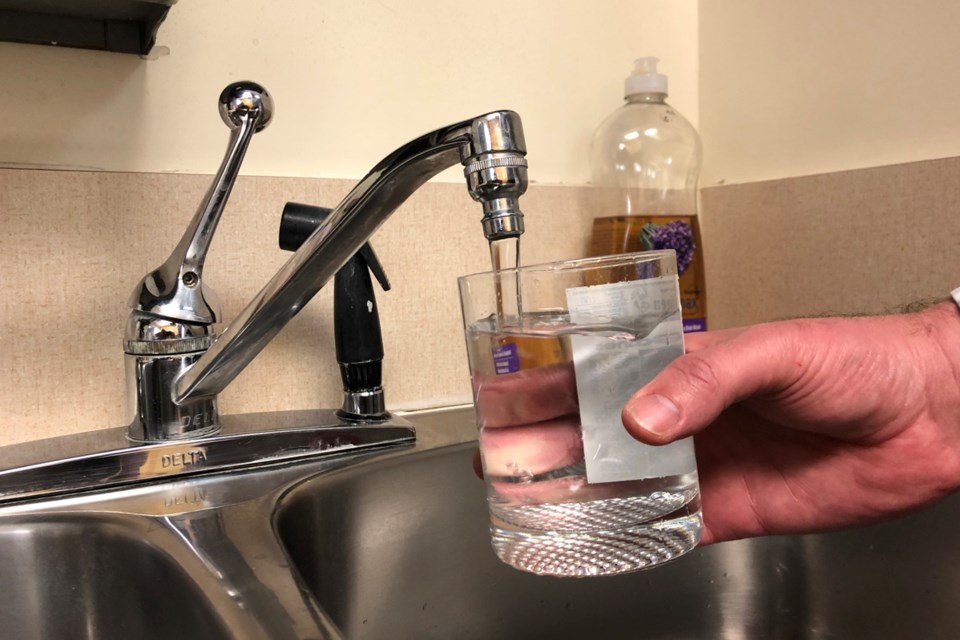
With 394 kilometres of asbestos cement (AC) water pipes, Prince George had the second-highest percentage of AC pipes among the 85 communities across Canada included in W5’s report.
Other B.C. communities with high percentages of AC water mains included Fort St. John (89 km, 47 per cent), Richmond (230 km, 36 per cent), Kelowna (195 km, 32 per cent), Vernon (209 km, 32 per cent), Kamloops (175 km, 29 per cent), Lillooet (8 km, 25 per cent), Qualicum Beach (26 km, 23 per cent), Nanaimo (100 km, 16 per cent), Delta (76 km, 12 per cent), Penticton (21 km, eight per cent) and Burnaby (53 km, seven per cent).
Vancouver, Surrey, Coquitlam and Victoria each reported one per cent or less of their water main infrastructure was made of AC pipes. Data on AC pipes wasn’t available or incomplete for many other B.C. communities.
Asbestos inhalation has been linked to increased risk of lung cancer for decades, but research published in 2016 linked asbestos contamination in drinking water to increased risk of multiple forms of cancer, including gastric and colorectal cancers.
PRINCE GEORGE WATER NOT TESTED FOR ASBESTOS
In an email, a spokesperson for the City of Prince George said the city operates a total of 588 km of water mains, of which around 394 km (not the 385 km reported by W5) are AC pipe.
«The City of Prince George operates our potable water systems in compliance with Health Canada, Northern Health, and provincial and federal water regulations. Our distribution system meets or exceeds all requirements for delivering safe and clean potable water to our residents,» the spokesperson said. «Health Canada has not set any maximum contaminant levels for asbestos in water and the City does not currently test for it.»
The city has not used AC pipe for more than 40 years, and most of the AC pipe still in use dates back from the 1960s to 1980s when the city was growing rapidly, the spokesperson said.
«The greatest threat to fibers entering the water system is when the pipe is cut during a repair or removal. As a result, municipal utilities follow strict procedures to mitigate or eliminate the release of fibers. Utility workers are at the greatest risk from the airborne dust and, therefore, must wear appropriate personal protective equipment when cutting into AC pipe,» the spokesperson said. «The City of Prince George has seen very few AC water main breaks over the years and recorded just four in 2022. The City has seen an increase in budgets for water main replacement/renewal over the past decade and continues to work to replace our aging infrastructure when opportunities and funding allow.»
‘NO GUIDELINES FOR ASBESTOS IN DRINKING WATER’
In an email, a spokesperson for the B.C. Ministry of Health and Ministry of Municipal Affairs said the B.C. government is following the lead of Health Canada when it comes to potential asbestos contamination in water.
«Asbestos is a known inhalation risk, however, according to Health Canada and the World Health Organization, there is no consistent, convincing evidence that ingested asbestos is hazardous. As such, no guidelines for asbestos in drinking water is available in Canada,» the spokesperson said. «B.C.’s Ministry of Health works with Health Canada through the Federal Provincial Territorial Working Group on Drinking Water, which keeps abreast of emerging evidence to see if there is a reason to change position.»
Municipal governments are responsible for the management of their infrastructure, including drinking water systems, and the provincial government recently provided them with $1 billion for infrastructure projects through the Growing Communities Fund, the spokesperson added. The City of Prince George received nearly $12.5 million through the fund.
According to Health Canada information about asbestos consumption in drinking water, asbestos fibres ingested through drinking water are typically eliminated from the body in feces. Asbestos fibres can be released by AC pipes carrying drinking water to your home, the website says.
«Standard water treatment can effectively remove these asbestos fibres from drinking water supplies,» Health Canada’s site says.